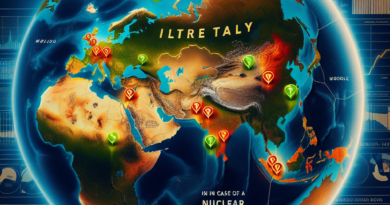Russia is out of the CFE Treaty. A new contribution to war escalation
On November 7, 2023, the procedure for Russia's withdrawal from the Treaty on Conventional Forces in Europe (CFE), a treaty signed in 1990 between the heads of member states of NATO and the Warsaw Pact, officially ended.
This procedure began in 2007 when, as a sign of protest against the creation of the anti-missile shield announced by President Obama, Russia decided to withdraw from the agreement.
“The procedure provided for by the CFE Treaty for Russia's withdrawal from this treaty ended at midnight on November 7, 2023.
Therefore, the international legal document, the validity of which our country suspended in 2007, has become history for us”: with these words the Russian Foreign Minister, Sergei Lavrov, declares the withdrawal process from the Treaty on Conventional Forces in Europe concluded.
What the CFE Treaty is and what it provides The purpose of the CFE Treaty is to limit the number of weapons that countries belonging to NATO and the Warsaw Pact could use in Europe.
The first concrete action of the treaty was to limit the maximum number of tanks present in Europe to a maximum number of 40 thousand units.
The same limit was imposed on artillery pieces.
The maximum number of armored vehicles was subsequently set at 60 thousand units, that of combat helicopters at 4,000 and that relating to combat aircraft at 13,600 units.
The Treaty also provided for the exchange of information relating to the location of each country's armies, the acceptance of inspections and participation in meetings of the Consultative Group.
Meetings in which Russia had not participated since 2015.
The purpose of the limitations, rules and meetings is, as reported in the Treaty itself, to "achieve a safe and stable balance of conventional armed forces in Europe at lower levels than those that have existed up to now, eliminate disparities prejudicial to stability and security, and prevent, as a high priority, the ability to launch surprise attacks and initiate large-scale offensive actions in Europe".
The Treaty is therefore based on the concept of security cooperation.
read also The 5 reasons why we are close to a third world war Russia's withdrawal from the CFE Treaty: reasons and consequences Russia justified its withdrawal from the Treaty in 2007 in these terms: "the Treaty, signed during the Cold War, stopped to respond to contemporary European realities and our security interests" and, in relation to the adapted CFE Treaty, a version proposed by Russia in 1999 aimed at updating the 1990 agreement, adds that "it could not enter into force due to of the position of NATO countries that have tied its ratification to Russia's fulfillment of far-fetched requirements that have nothing to do with the CFE Treaty.
Furthermore, they have taken a series of steps incompatible with the letter and spirit of the Treaty, undermining the balance at its basis." Moscow's decision on November 7 dissolves the concept of common security.
Today states, not only the largest and most powerful, pursue their security through nuclear weapons and renewed conventional armaments in the dangerous belief that the ultimate objective is to assert their military superiority.
This seems to be what Putin thinks, since he appears willing to use the EMP (Electromagnetic Pulse), a bomb that emits a very powerful electromagnetic field capable of destroying any device that uses electrical circuits.
Russia's withdrawal from the CFE Treaty, in any case, is nothing more than a contribution to the irrational escalation of war.
read also The role of nuclear power in US security strategies




